Key Takeaways
- Food noise is a real and manageable issue, with practical steps available to address it.
- Glucose spikes from candy and high-sugar foods can drive cravings and amplify food cravings, but pairing sweets with protein, fiber, and physical activity can help blunt their effects.
- Mindful strategies and real-time data help you enjoy Halloween treats, stabilize glucose levels, and reduce food noise.
{{mid-cta}}
Halloween marks the beginning of high-risk food situations like sugar overload and nonstop food cues. Then we continue with football season, Thanksgiving, holiday parties, Christmas, and New Year's celebrations. It’s also the time of year when Halloween candy, cupcakes, and other sweet treats seem to appear everywhere: from trick-or-treating buckets to Halloween parties and office break rooms. It can feel like food noise (mental chatter about food that won’t shut off) is deafening this time of year!
But here’s the good news: Halloween cravings don’t have to own you. With science, intentional strategies, and Signos, you can quiet the noise and enjoy the season.
This article explains the science behind “food noise”, how Halloween candy and sugary treats amplify it, and how to quiet it through science-backed strategies and glucose insights to enjoy Halloween without deprivation and meet your health goals.
What Is Food Noise and Why Halloween Makes It Worse?
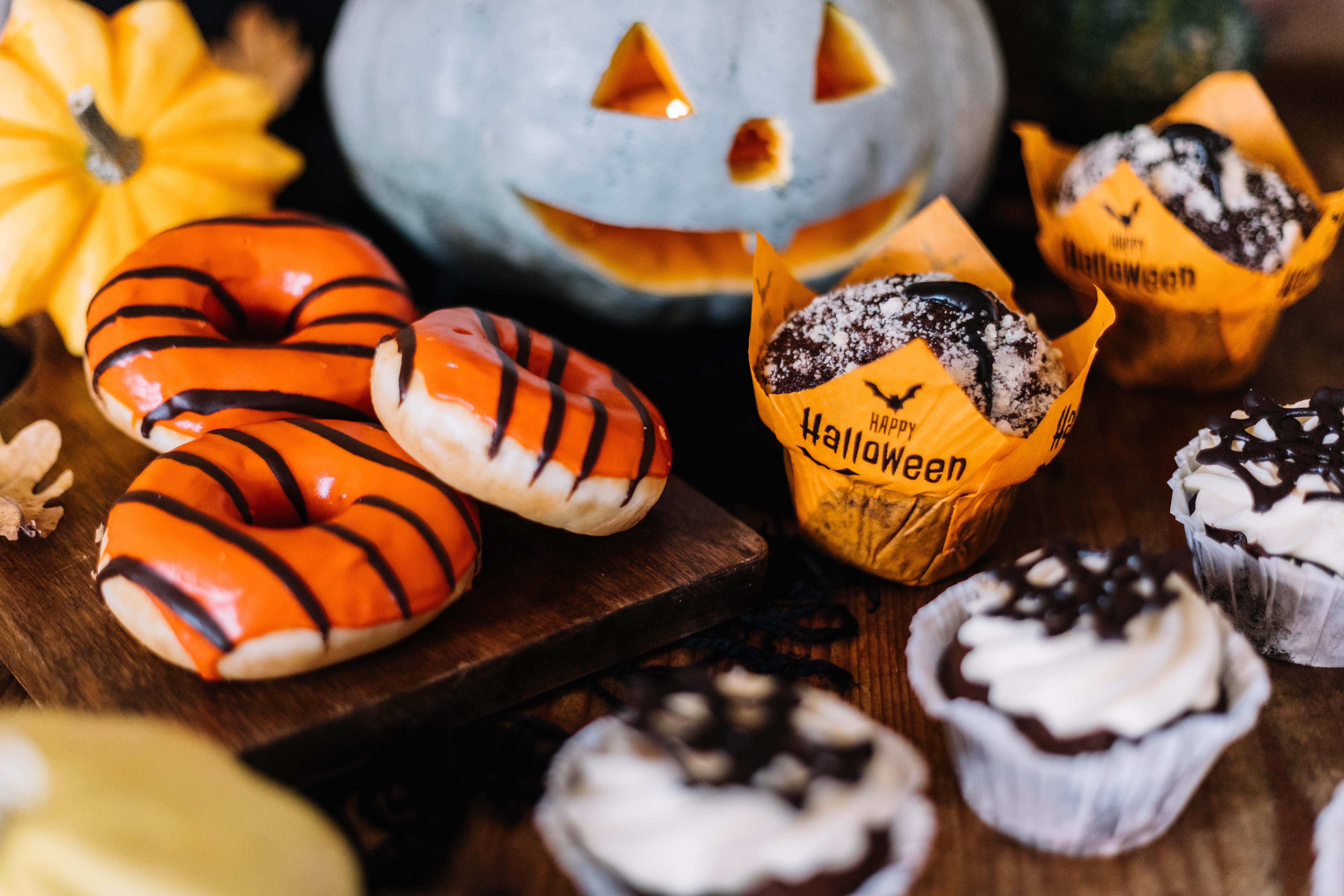
Food noise is a relatively new phrase in the nutrition and health space. The term first appeared in Google searches in November 2006, but interest has skyrocketed in recent years, peaking in 2024 and staying consistently high since then.1
At its core, food noise is described as “constantly thinking about food” or “non-stop mental chatter” about eating, cravings, and hunger that feels challenging to quiet. Food noise can override hunger cues, leading to patterns of overeating or emotional eating.1
For many people, food noise intensifies during times of stress, boredom, or when faced with the constant temptation of certain foods. Halloween can amplify food noise with constant candy bowls, marketing, and parties.1 Social media trends like mukbang videos or TikTok “candy challenges” can make cravings feel even louder, while the constant stream of Halloween food content keeps our attention locked on sugar.
Candy itself can also metabolically impact your cues to eat. Candy is typically rich in simple sugars (also called simple carbohydrates with no fiber), which can cause glucose spikes and subsequent crashes, prompting the body to crave more candy or even other sweet treats like cupcakes or Oreos. For some, this cycle can feel similar to binge eating episodes, especially when diet culture messages around “earning” or “burning off” candy add guilt to the mix.2,3
This cycle of sugar highs and crashes set the stage for stronger cravings and louder food noise, which brings us to the science behind how glucose spikes drive our urge to eat.
The Science of Cravings and Glucose Spikes
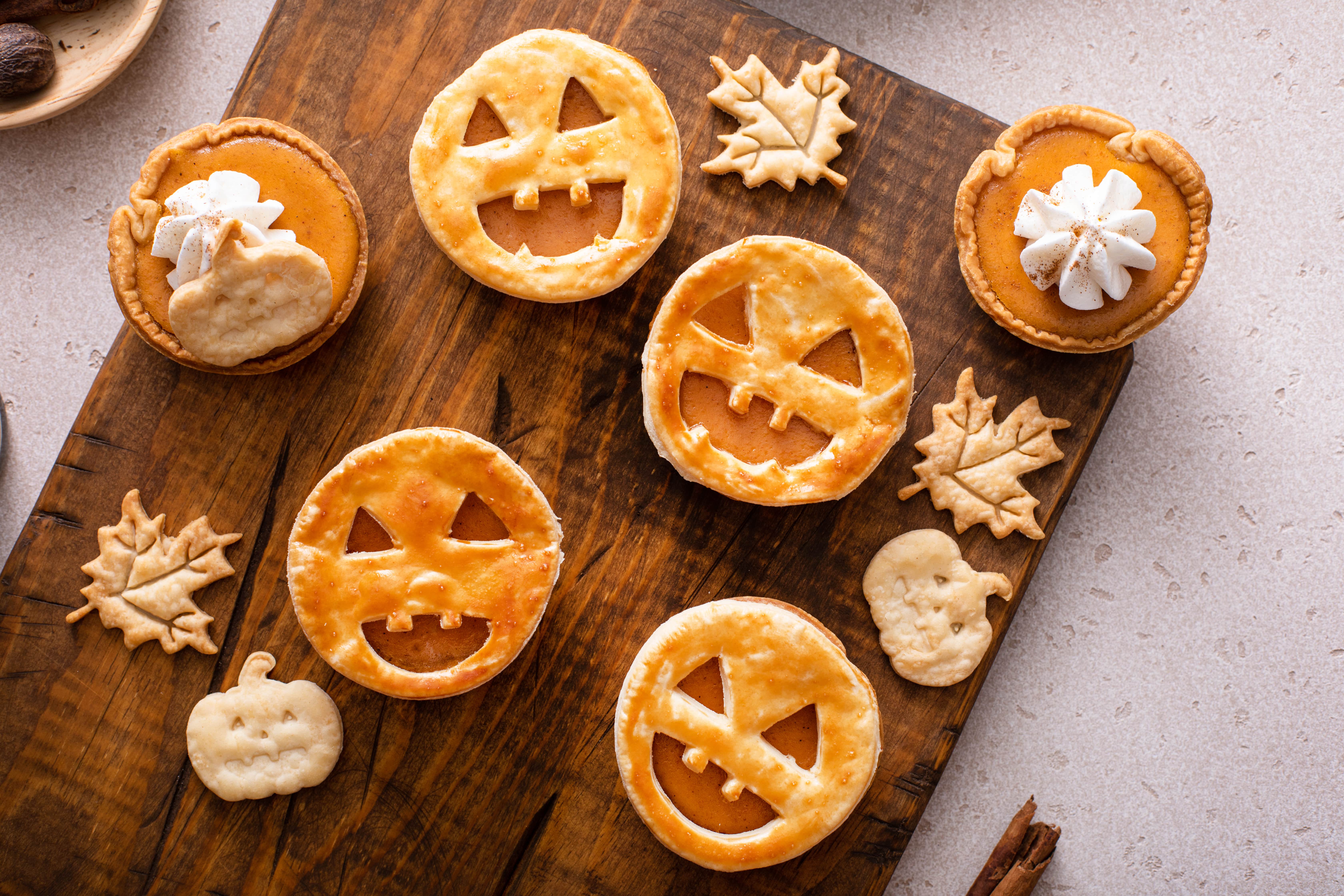
High-sugar consumption activates the brain’s reward center, including the dopamine and endorphin systems, which are associated with satisfaction and pleasure. This same neurological loop is why eating an Oreo or a handful of Halloween candy can light up the brain’s reward circuits. Over time, this can make intuitive eating (tuning into hunger and fullness cues) more difficult. Chronic exposure to high-sugar foods may alter this system, leading to heightened cravings and desire for sugar.4,5
Further research is needed in humans to gain a more comprehensive understanding of this effect and to determine why some individuals may be more susceptible to it than others.4,6
Blood sugar instability can also lead to increased hunger and more food intake. A 2020 study investigated the effects of post-meal glucose dips on hunger and food intake in 1,102 healthy adults over 13 days. Researchers found that adults with larger glucose dips experienced greater hunger 2-3 hours after the meal, ate sooner, and consumed more than those with smaller glucose dips.3
Hunger hormones are also impacted by blood sugar instability. Ghrelin stimulates appetite and food intake; it normally rises when blood sugar levels are low and falls when blood sugar levels are high. In individuals with type 2 diabetes and insulin resistance, the ghrelin balance can be disrupted, resulting in absent or blunted ghrelin levels.7
If you find yourself sleep-deprived or stressed around Halloween, these factors can amplify your cravings. Elevated cortisol, a stress hormone, can increase hunger and intake of high-calorie foods, and sleep deprivation can further raise cortisol levels, intensifying cravings even more.8,9
Understanding what drives food noise is helpful. But practical steps to quiet the chatter about food will put you in control to enjoy Halloween and other fall events.
The Metabolic Playbook: Quieting Halloween Food Noise
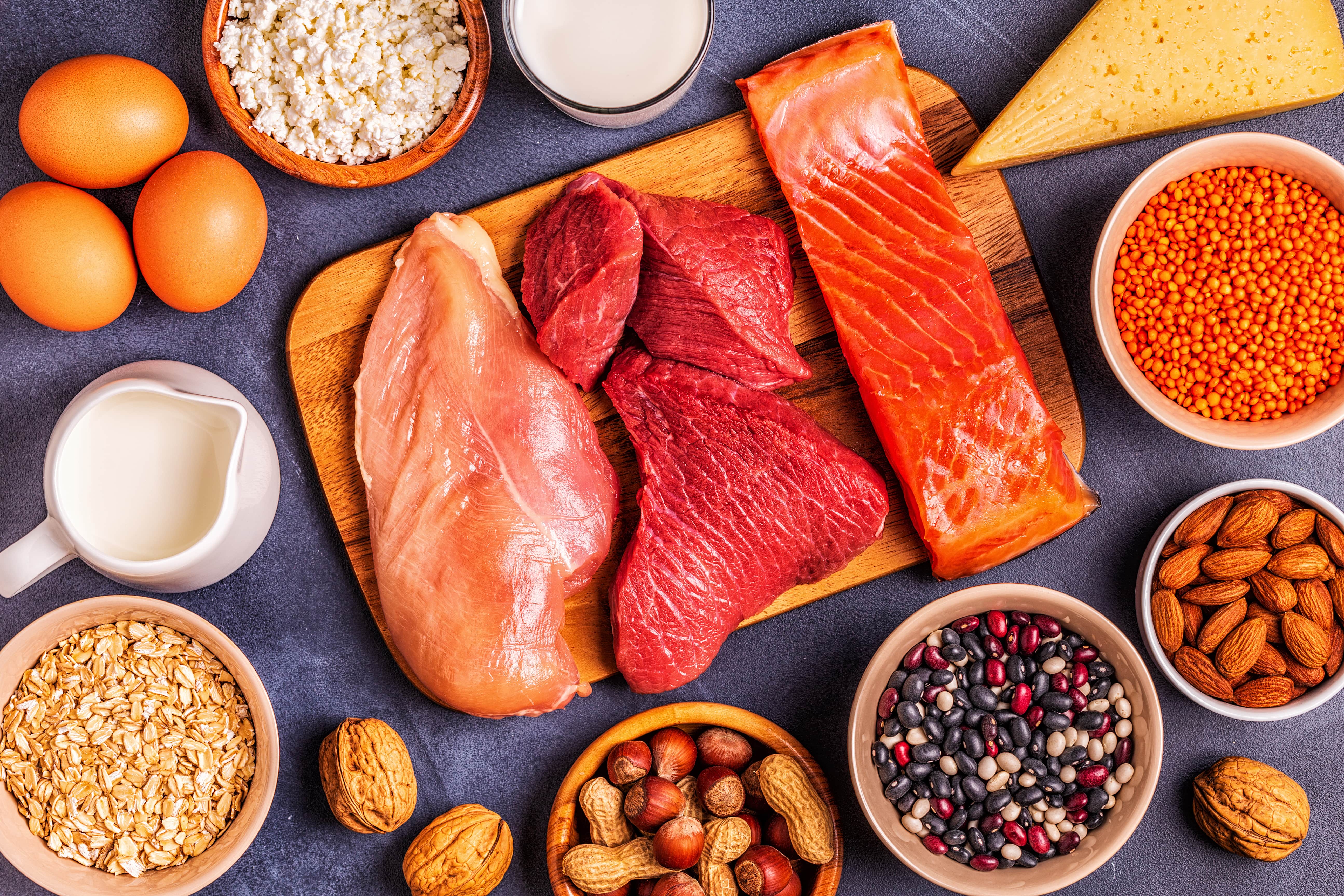
Try these practical science-backed strategies:
- Pre-Game With Protein: Think ahead before Halloween parties or pumpkin patch outings where candy and Halloween food are everywhere. Eat a protein-rich meal before parties to help reduce the temptation to indulge in candy. Protein helps to stabilize glucose levels, preventing large spikes and dips.10 Choose protein-rich options like fish, chicken, turkey, nuts, nut butters, eggs, beans, Greek yogurt, or cottage cheese.
- Strategic Swaps: Opt for dark chocolate, fruit and nut mix, pumpkin protein balls, or dark chocolate peanut butter cups. Sweet choices that contain protein and fiber help keep your glucose (and cravings) stable. Dark chocolate contains less sugar, leading to fewer cravings.5
- Candy Audit: Choose favorites, set a “candy budget” instead of mindless grazing. Plan to savor your top sweet treats and skip the ones you least like.
- Spike-Stopping Habits: Walk after eating candy, hydrate, or balance your blood sugar with fiber or a meal.
Eating Halloween candy with a protein and fiber-rich meal can blunt glucose spikes compared to eating candy alone. Adding in a walk can help use any excess glucose from the candy.
- Mindset Trick: Reframe “I can’t have this” to “I choose what fuels me.”
- Prioritize Sleep: Adequate sleep supports healthy hormone and appetite regulation.9
- Maintain Meals: Don’t skip meals to “make room” for candy. Regular, balanced meals help control cravings and maintain blood sugar control.
- Enjoy Non-Food Activities: Try building a festive Halloween playlist, planning themed Halloween costumes, or visiting pumpkin patches to shift focus away from food and toward fun memories. Remember the other aspects you enjoy at each holiday.
This Halloween, trick or treat your way to quieter food noise with mindful, protein- and fiber-rich meals, protein-paired candy, movement, intentional and savorful candy choices, and a pause before reaching for sugar.
How Signos Helps You Manage Food Noise
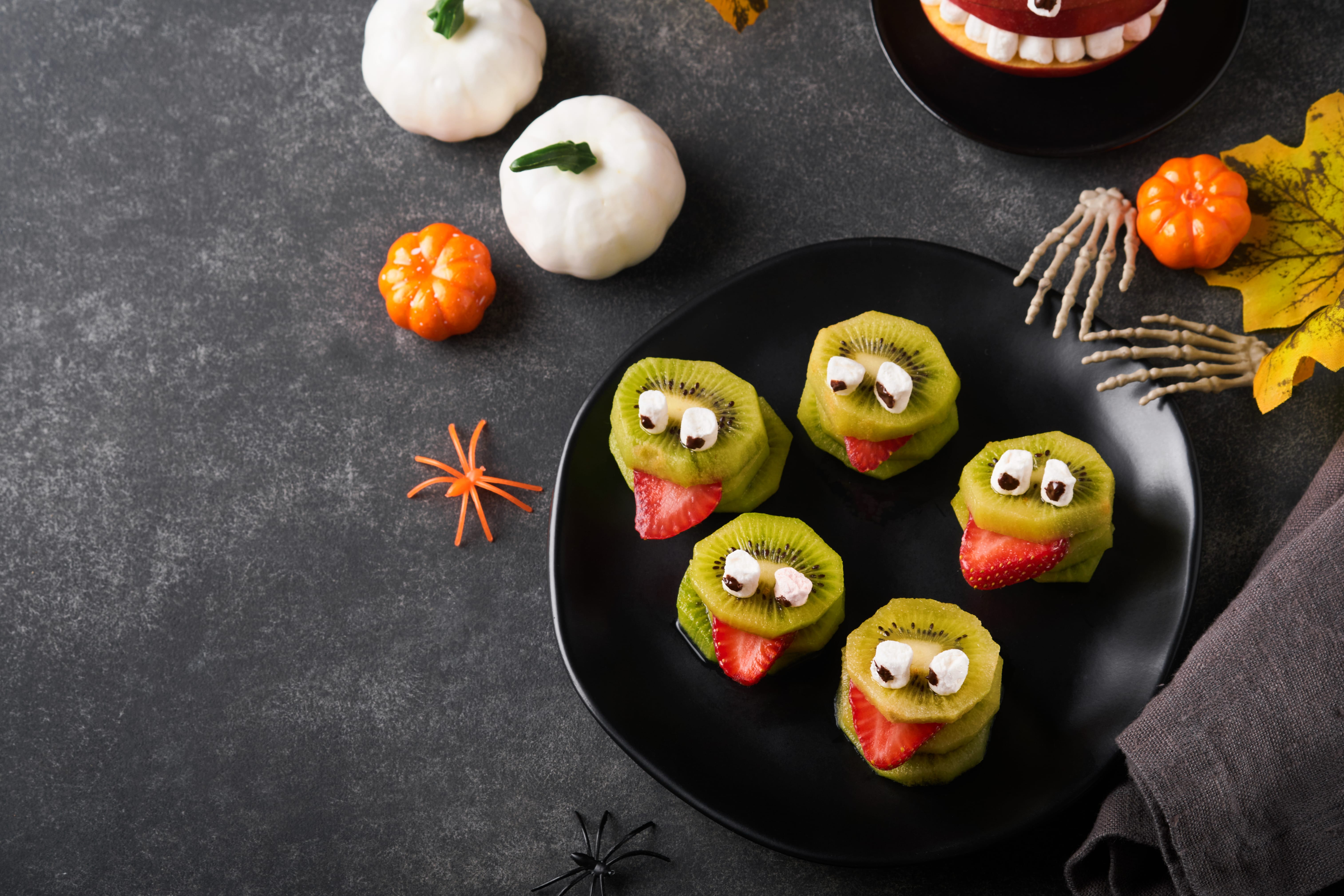
Signos empowers you to understand how food noise (like the urge to eat candy) impacts your actual eating and glucose levels. For people recovering from diet culture or managing binge eating patterns, real-time feedback can reduce anxiety and reframe food as data, not judgment. It’s a tool that supports wellness and balanced decision-making around sweet treats.
Signos Features & Actions:
- Real-time glucose tracking shows how each type of candy hits your system.
- Seeing the spike motivates better choices (walking, swapping, portion control).
- Signos can coach you to time candy with activity or meals.
- Reduces guesswork, which means less mental noise and more confidence in your decisions.
The Bottom Line
Halloween cravings don’t have to be scary. Food noise is a signal you can learn to manage, not a monster you can’t escape. Whether it’s your first time using Signos or you’ve been tracking glucose for a while, it’s a helpful ally in managing food noise during this time of year when social media and Halloween candy temptations are everywhere.
Learn More With Signos’ Expert Advice
A CGM lets you see how your glucose responds to different types of candy, sweets, food, and physical activity, and helps you improve your overall health.
Learn more about glucose levels and tracking on the Signos blog, written by health and nutrition experts.
Topics discussed in this article:
References
- https://pubmed.ncbi.nlm.nih.gov/40628707/
- https://www.cdc.gov/diabetes/healthy-eating/choosing-healthy-carbs.html
- https://www.sciencedirect.com/science/article/pii/S2475299123096294
- https://pubmed.ncbi.nlm.nih.gov/40654193/
- https://www.mdpi.com/2072-6643/11/3/596
- https://pubmed.ncbi.nlm.nih.gov/27307220/
- https://pubmed.ncbi.nlm.nih.gov/20700400/
- https://www.sciencedirect.com/science/article/pii/S2213158222002674
- https://pubmed.ncbi.nlm.nih.gov/35189549/
- https://pubmed.ncbi.nlm.nih.gov/14522731/




.svg)
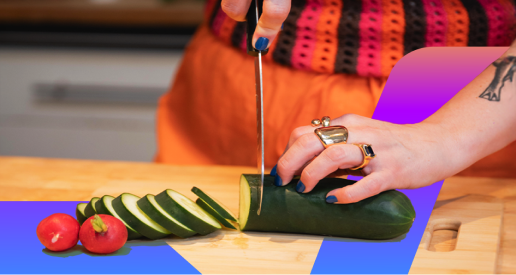









.svg)
.svg)
.svg)
.svg)
.svg)
.svg)
.svg)
